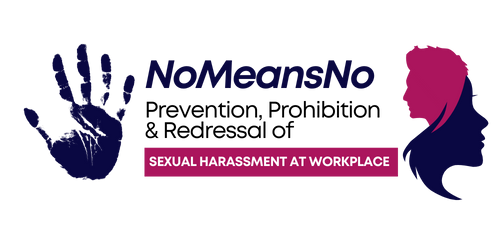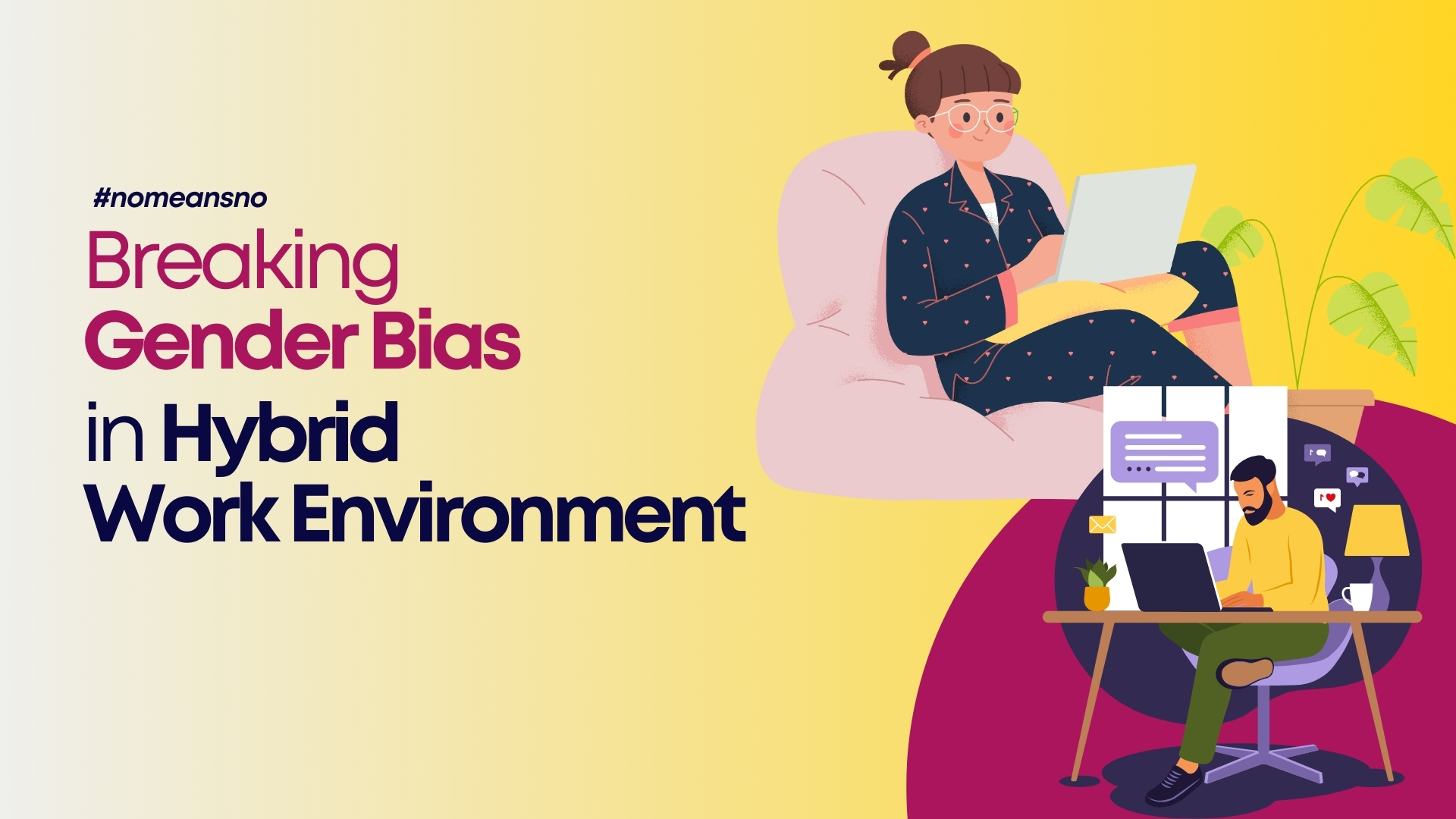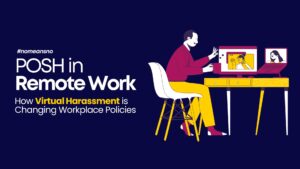If someone had told us a few years ago that working from home or in a hybrid setup would become the norm, we might have dismissed it as a far-fetched idea. Yet, the unimaginable happened, and the world as we knew it transformed.
A recent study shows that approximately 28.2% of full-time employees now operate in a hybrid work environment. The shift to hybrid work has redefined how organizations function, blending the flexibility of remote work with the collaborative energy of in-office interactions. However, this evolution in workplace dynamics has also brought forth unintended challenges—chief among them, the reinforcement of gender biases. Tackling these biases is essential for cultivating truly equitable and inclusive work environments.
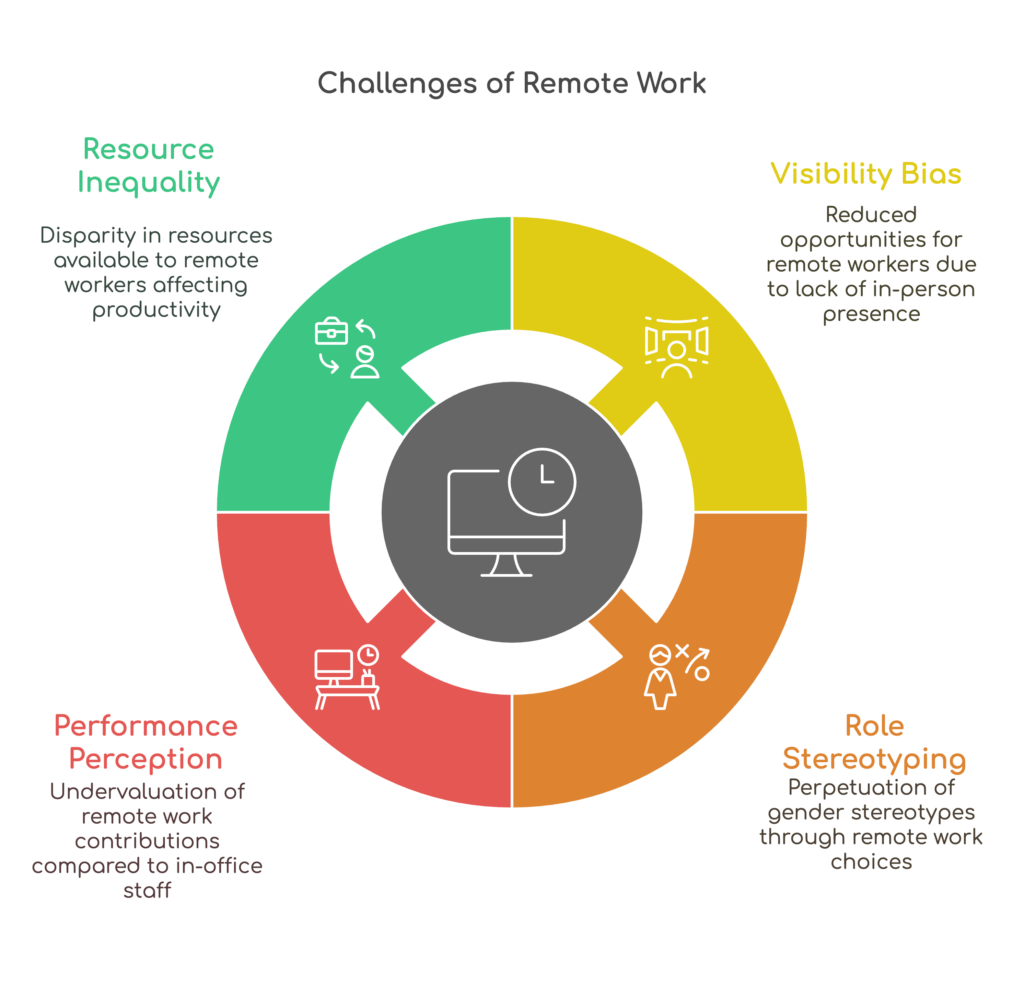
Understanding Gender Bias in Hybrid Work Environment
Hybrid work setups can exacerbate existing gender inequalities due to societal norms, unconscious biases, and organizational practices. Gender disparity, in turn, can cause discouragement and a sense of resentment within team members. Furthermore, organizations subject to the Prevention of Sexual Harassment (POSH) Act must ensure that such biases do not lead to workplace harassment or discrimination, even in remote settings.
Let’s discuss the key contributing factors:
- Visibility Bias: Employees working remotely, often women, may face reduced visibility in the workplace, leading to fewer opportunities for promotions, critical projects, or leadership roles.
- Role Stereotyping: Women frequently assume caregiving responsibilities, making them more likely to choose remote work options. This choice can perpetuate stereotypes that they are less committed to their careers.
- Performance Perception: Remote workers’ contributions may be undervalued compared to those of in-office counterparts, as “face time” often influences managerial perceptions.
- Unequal Access to Resources: Hybrid setups may inadvertently provide fewer resources or support to remote employees, affecting their productivity and career growth.
Case Studies Highlighting Gender Bias in Hybrid Work
Case Study 1: The “Office Bias” Phenomenon In a 2022 survey by McKinsey, women reported being overlooked for leadership roles in hybrid environments. A financial firm revealed that despite equal performance ratings, 60% of promotions went to in-office employees, predominantly men.
Case Study 2: Unequal Workload Distribution A tech company’s internal audit found that remote female employees received 20% more administrative tasks than their male peers, limiting their time for strategic work and professional development. Findings similar to these are elaborated in the Women in the Workplace 2024 report.
Note: The “Women in the Workplace 2024” report by McKinsey & Company and LeanIn.Org does not disclose the names of the companies audited.
Landmark Case: Goldman Sachs Gender Discrimination Settlement In 2023, Goldman Sachs agreed to a significant settlement in a gender discrimination lawsuit. The case highlighted issues such as pay disparity and unequal promotion opportunities for women, emphasizing the importance of addressing systemic biases in corporate structures. More details can be found in the Gordon Law Group’s article.
Strategies to Address Gender Bias in Hybrid Work
Adopt Inclusive Policies
- Implement clear guidelines to ensure fair treatment of remote and in-office employees.
- Standardize performance metrics to evaluate contributions based on outcomes rather than presence.
- Integrate POSH guidelines into hybrid work policies to ensure a safe and harassment-free environment for all employees.
Leverage Technology
- Use collaboration tools to enhance communication and ensure equal participation in meetings.
- Employ analytics to monitor workload distribution and address disparities.
Provide Leadership Training
- Train managers to recognize and mitigate unconscious biases.
- Encourage equitable task allocation and opportunities for all employees.
Foster Visibility
- Create platforms for remote employees to showcase achievements.
- Organize hybrid events to build connections across teams.
Support Work-Life Balance
- Offer flexible schedules and caregiving support programs.
- Normalize the use of these benefits for all genders.
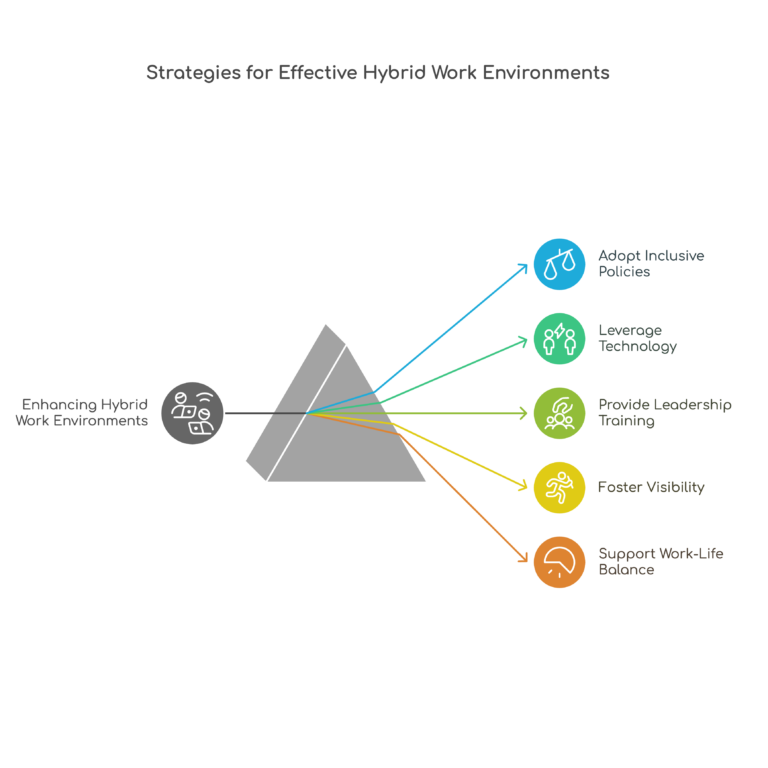
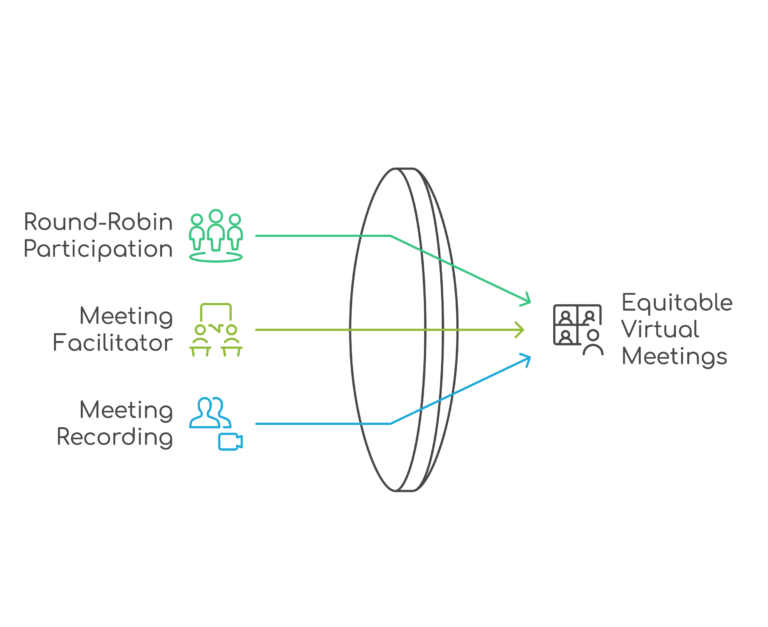
Equitable Meeting Practices
During virtual meetings, managers can implement a “round-robin” approach to ensure all participants contribute equally, regardless of their physical location or gender. This strategy minimizes unconscious bias, such as men being given more speaking opportunities or women’s contributions being interrupted or overlooked.
Additionally, appoint a meeting facilitator to monitor and address behaviors like interruptions, mansplaining, or dismissive comments. This role can be rotated to ensure inclusivity. Recording meetings can further help attribute ideas correctly, preventing instances where contributions from women or underrepresented groups are overshadowed or misattributed.
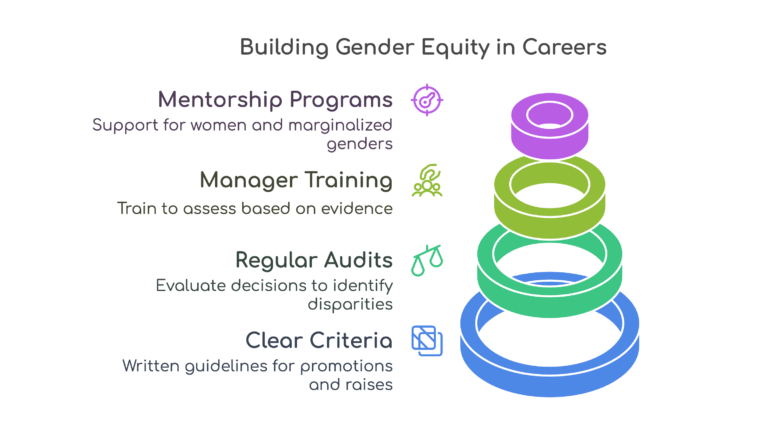
Transparent Career Pathways
Providing clear, written criteria for promotions and raises is essential to prevent subjective assessments based on visibility, proximity, or gender stereotypes. Make these criteria easily accessible and actively communicated to all employees.
Regular audits of promotion and salary decisions can help identify and address gender disparities, while training managers to evaluate performance and potential based on documented evidence reduces bias. Additionally, mentorship and sponsorship programs aimed at women and marginalized genders can foster professional growth and create a more equitable pathway to leadership roles.
Recognition Programs
A monthly “Spotlight on Success” initiative can be tailored to highlight achievements equitably. Transparent and measurable criteria should be established to avoid unconscious gender bias, such as overvaluing stereotypically “masculine” traits like assertiveness over collaboration.
Encourage peers and managers to nominate individuals from diverse backgrounds, explicitly promoting the recognition of women and other underrepresented genders. Incorporating storytelling elements can also help illustrate the unique contributions of diverse team members, ensuring recognition is both fair and meaningful.
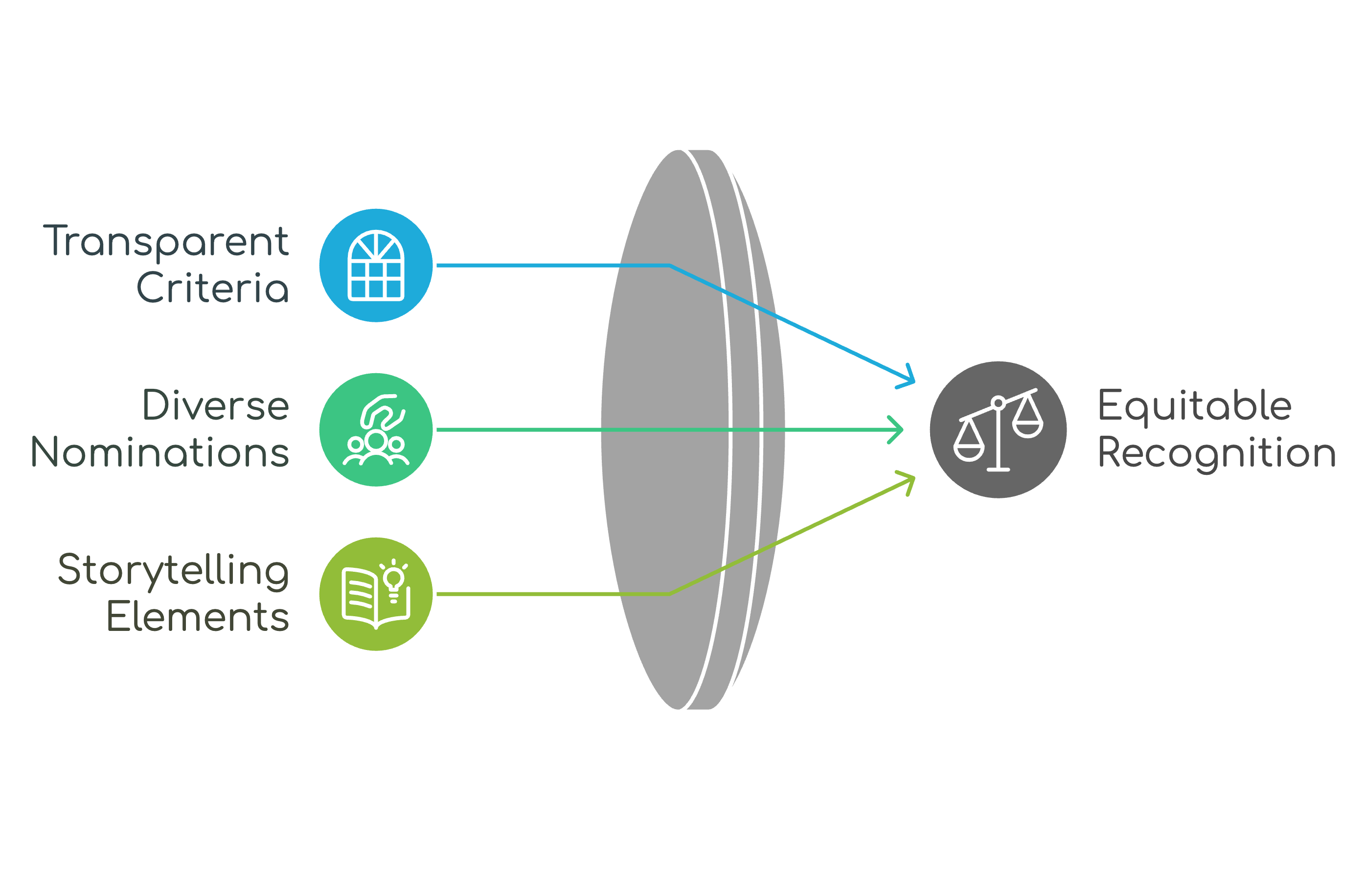
Additional Strategies for Broader Inclusivity
Addressing Intersectionality
Recognize that gender bias often intersects with other factors such as race, age, disability, and socioeconomic status. Policies and strategies should account for these overlapping challenges to create a genuinely inclusive workplace.
- Conduct regular intersectional bias training.
- Analyze data through multiple lenses to uncover disparities affecting specific groups.
- Offer tailored support programs for employees facing compounded biases.
Tools and Technology for Hybrid Inclusivity
Leverage advanced tools to bridge gaps in visibility and resource distribution:
- AI-Powered Insights: Use AI tools to identify patterns of inequality in task assignments, meeting participation, and recognition.
- Virtual Reality (VR) Platforms: Foster immersive team-building experiences that connect remote and in-office workers equally.
- POSH Compliance Tools: Implement software that ensures seamless reporting and resolution of harassment cases in hybrid setups.
Community Building
Develop programs to strengthen bonds among employees:
- Host inclusive hybrid team-building activities that emphasize collaboration and understanding.
- Create employee resource groups (ERGs) to support underrepresented communities.
- Promote “buddy systems” to help remote employees feel more connected to their teams.
Leveraging PoSH Compliance to Address Gender Bias
The Prevention of Sexual Harassment (PoSH) Act provides organizations with a strong foundation to build equitable and harassment-free workplaces, including hybrid setups. By aligning policies and practices with PoSH compliance, companies can actively dismantle gender biases and promote inclusivity.
- Preventing Subtle Harassment
PoSH guidelines help address workplace behaviors like microaggressions, exclusion, and unequal opportunities, ensuring remote and in-office employees feel equally safe and valued. - Strengthening Policies
Organizations can integrate PoSH training programs and workshops to ensure employees understand their rights and responsibilities, creating a cohesive and inclusive culture. - Awareness and Training
Conducting regular PoSH awareness training or PoSH certification online for employees and managers fosters recognition of unconscious biases and equips teams to prevent and address workplace harassment. - Accessible Reporting Mechanisms
Tech-enabled tools and online PoSH training modules streamline reporting processes, enabling employees, especially those in remote setups, to voice concerns confidently. - Ongoing Accountability
Regular audits of workplace practices, supported by PoSH Act training and compliance checks, help organizations proactively address gaps in equity and harassment prevention.
By embedding PoSH compliance training into hybrid work strategies, companies not only ensure adherence to the law but also foster a culture where equity and respect thrive.
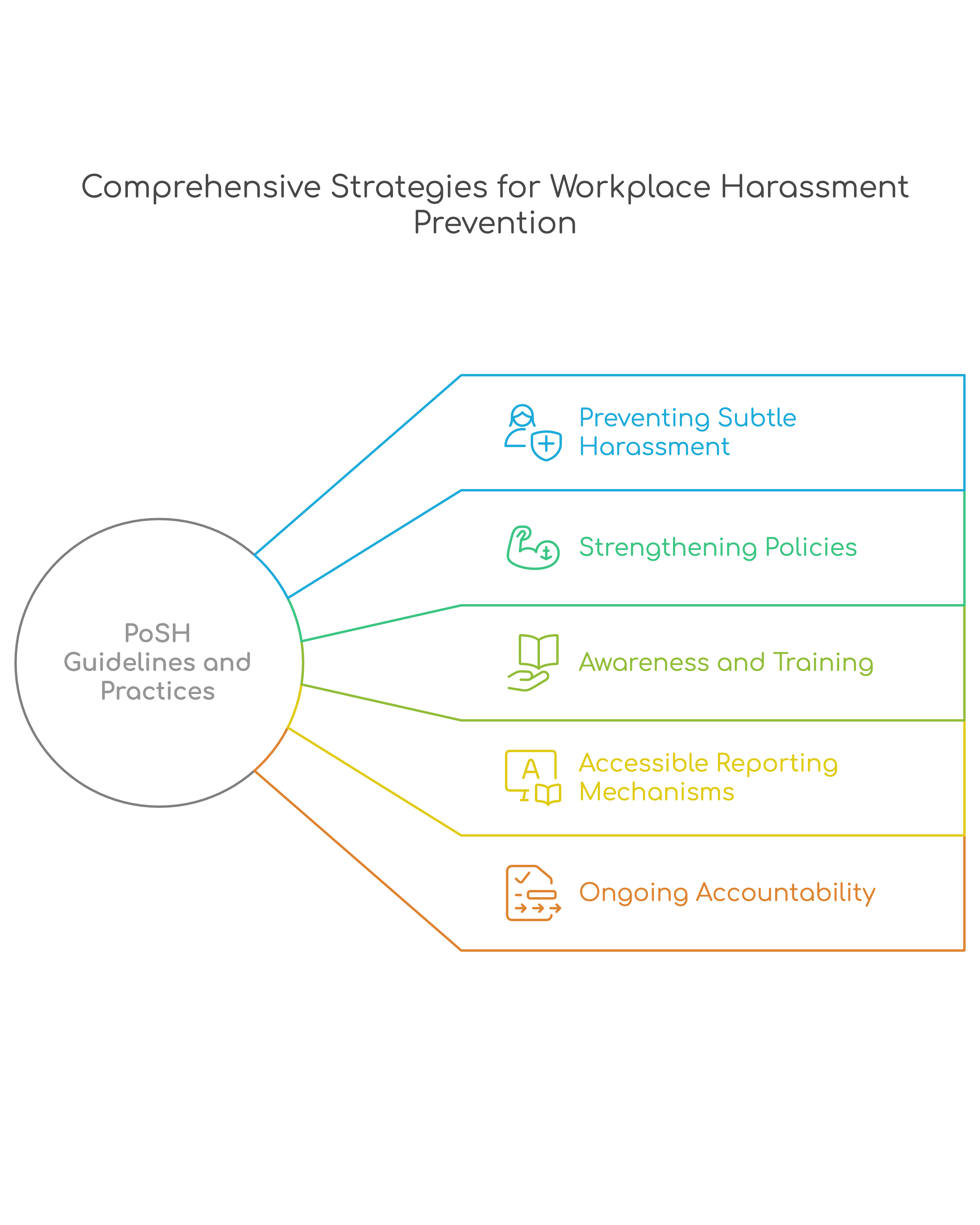
Building an Inclusive Future
To eliminate gender bias in hybrid work environments, organizations must commit to creating inclusive cultures.
This involves: Regularly reviewing policies for unintended biases. Encouraging open dialogue about challenges faced by underrepresented groups. Benchmarking progress through employee feedback and diversity metrics.
By addressing gender biases and leveraging tools like PoSH training courses and compliance strategies, organizations can unlock the full potential of their workforce, driving innovation and equitable growth.#NoMeansNo
